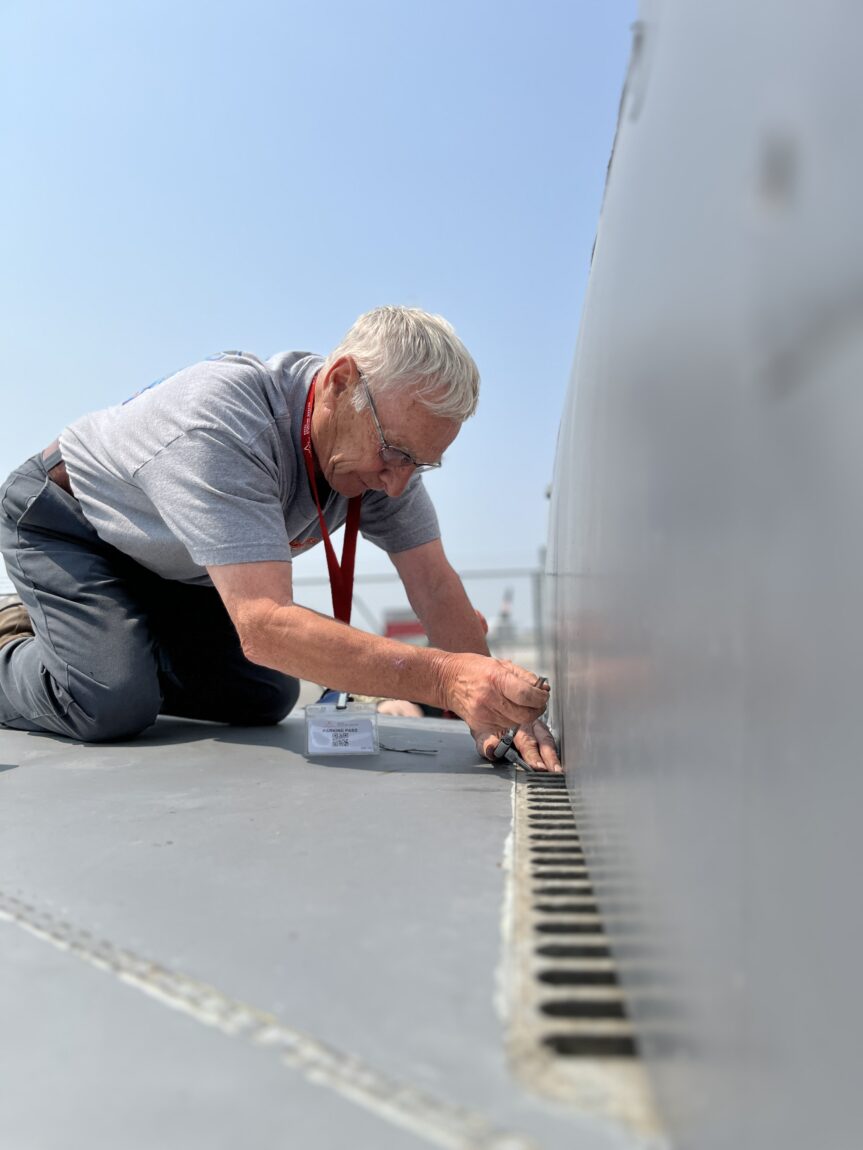*UNDER RESTORATION*
When Canada joined the North Atlantic Treaty Organization (NATO) in 1949, it agreed to provide a European air contingent. The best aircraft then was the North American Sabre, the F-86. Rather than buying Sabres from the Americans, Canada obtained a license to have them produced by Canadair in Montreal. This aircraft launched Canada into the jet age.
From 1951 to 1963, the Sabre was the first line of defence against the spread of Communism in Europe. 12 squadrons were established across England, France, and Germany. Canadian pilots flew the N.A. F86-F Sabre and the Canadian-made Mk 6.
The Mk 6 was the last—and considered the best—Canadian Sabre variant ever built. Its first flight took place on October 19, 1954.
The additional thrust of Mk 6’s Orenda engine enhanced its altitude performance and climb rate over its predecessor, the Mk. 5, and its slotted wing gave it excellent low-speed characteristics. This wing design also gave the jet the manoeuvrability to make tight turns in midair combat.
Another unique quality of the Sabre was its bubble canopy, designed to give pilots a 260-degree view, something not many jets had at that time. On October 9, 1958, the museum’s Sabre, #1815, became the last Sabre aircraft ever produced, destined for the Luftwaffe. It served at Fighter Wing 72 in Oldenburg and its callsign was JB+372. In total, Canadair produced 225 Sabre Mk 6s for Germany.
Sabre #1815 last flew for the Pakistan Air Force (PA) and was donated to our museum in 1996 by the PA’s Air Commodore, Kamran Qureshi.
This aircraft is currently under restoration. To pay homage to the Sabres flown by the RCAF, it will be painted with the livery of No. 441 Squadron.
Join our Sabre Squadron with a donation to this restoration project and be a part of aviation history! DONATE TODAY



















